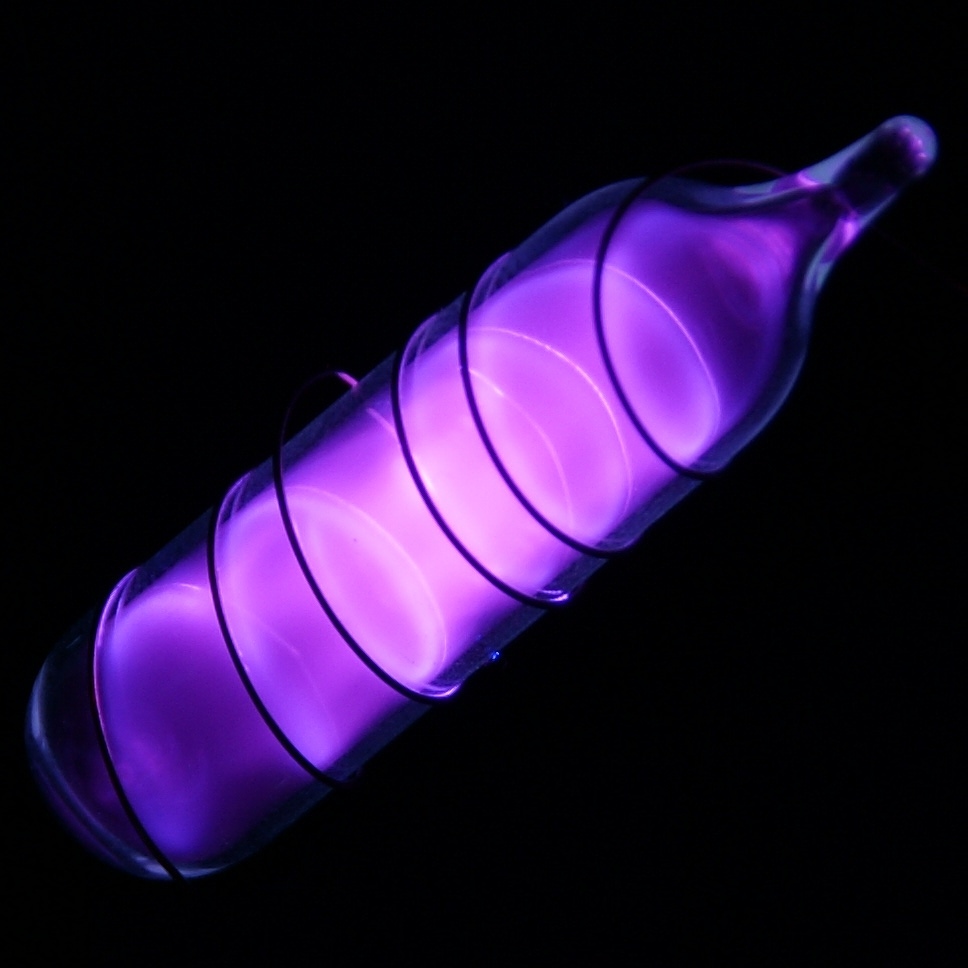Argon
18
Ar
Skupina
18
Perioda
3
Blok
p
Protoni
Elektroni
Nevtroni
18
18
22
Splošne lastnosti
Vrstno število
18
Atomska teža
39,948
Masno število
40
Kategorija
Žlahtni plini
Barva
Brezbarven
Radioaktivno
Ne
From the Greek argos, inactive
Kristalna struktura
Ploskovno centrirana kubična
Zgodovina
Argon was suspected to be present in air by Henry Cavendish in 1785.
It was not isolated until 1894 by Lord Rayleigh and Sir William Ramsay in Scotland.
Argon became the first member of the noble gases to be discovered.
In 1957, IUPAC agreed that the symbol should change from A to Ar.
It was not isolated until 1894 by Lord Rayleigh and Sir William Ramsay in Scotland.
Argon became the first member of the noble gases to be discovered.
In 1957, IUPAC agreed that the symbol should change from A to Ar.
Elektroni po lupinah
2, 8, 8
Razporeditev elektronov
[Ne] 3s2 3p6
Argon makes a distinctive blue-green gas laser
Fizikalne lastnosti
Faza snovi
Plin
Gostota
0,0017837 g/cm3
Tališče
83,8 K | -189,35 °C | -308,83 °F
Vrelišče
87,3 K | -185,85 °C | -302,53 °F
Talilna toplota
1,18 kJ/mol
Izparilna toplota
6,5 kJ/mol
Toplotna kapaciteta
0,52 J/g·K
Zastopanost v Zemljini skorji
0,00015%
Zastopanost v vesolju
0,02%

CAS številka
7440-37-1
PubChem CID številka
23968
Atomske lastnosti
Atomski polmer
71 pm
Kovalentni polmer
106 pm
Elektronegativnost
-
Ionizacijski potencial
15,7596 eV
Atomski volumen
22,4 cm3/mol
Toplotna prevodnost
0,0001772 W/cm·K
Oksidacijska stanja
0
Uporabe
Argon gas is used to fill conventional incandescent and fluorescent light bulbs.
Argon is also used as an inert gas shield for arc welding and cutting, as blanket for the production of titanium and other reactive elements.
It is used as a protective atmosphere for growing silicon and germanium crystals.
Argon is also used as an inert gas shield for arc welding and cutting, as blanket for the production of titanium and other reactive elements.
It is used as a protective atmosphere for growing silicon and germanium crystals.
Argon is considered to be non-toxic
Izotopi
Stabilni izotopi
36Ar, 38Ar, 40ArNestabilni izotopi
30Ar, 31Ar, 32Ar, 33Ar, 34Ar, 35Ar, 37Ar, 39Ar, 41Ar, 42Ar, 43Ar, 44Ar, 45Ar, 46Ar, 47Ar, 48Ar, 49Ar, 50Ar, 51Ar, 52Ar, 53Ar